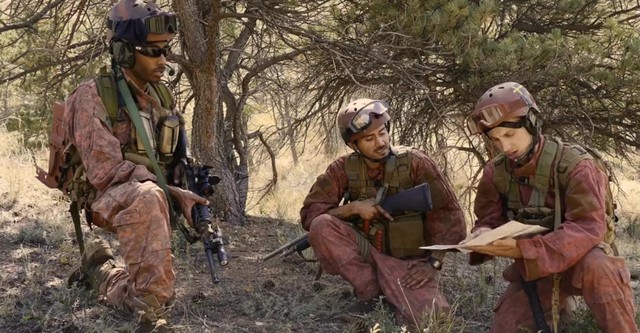Style & Direction
Shot with an ultra-low budget—reportedly around $3,000—Down River embraces a raw, handheld visual style. The shaky camera work and natural lighting create a sense of realism, though some viewers felt it came at the expense of clarity and coherence.
The film avoids traditional war-movie tropes like massive battles or advanced effects. Instead, it focuses on slow-burn tension and stripped-down survival. The dialogue is sparse, and the pacing favors mood over action.
Performances & Characters
The cast consists mostly of unknown or first-time actors. Performances are uneven—some moments feel earnest, while others come across as wooden or unpolished. Critics noted that this contributed to the film's gritty, amateurish atmosphere, while others saw it as a distraction from the emotional core of the story.
Characterization leans on broad strokes: the stoic leader, the loyal friend, the skeptic, the emotional wild card. While the film hints at deeper trauma and military fatigue, these themes are left largely underdeveloped.
Reception
Down River received a mixed to negative response from most viewers. Common criticisms included:
-
Inconsistent acting
-
Lack of realism in uniforms and tactics
-
Abrupt editing and unclear geography
-
Minimal plot progression
However, a small group of indie film fans praised the film’s ambition and artistic choices, comparing it to war films of the 1960s and 70s that prioritized mood and character over spectacle. They noted the boldness of attempting a full-length war drama with next to no resources.
Conclusion
Down River is not a conventional war movie. It lacks polish, big action sequences, and even a clear structure. But as a grassroots filmmaking experiment, it stands as a testament to what can be attempted with minimal means. It’s raw, sometimes frustrating, but undeniably bold.
Recommendation: Watch only if you enjoy indie cinema or are curious about experimental approaches to war storytelling. General action fans may want to look elsewhere.

-1751961420-q80.webp)


